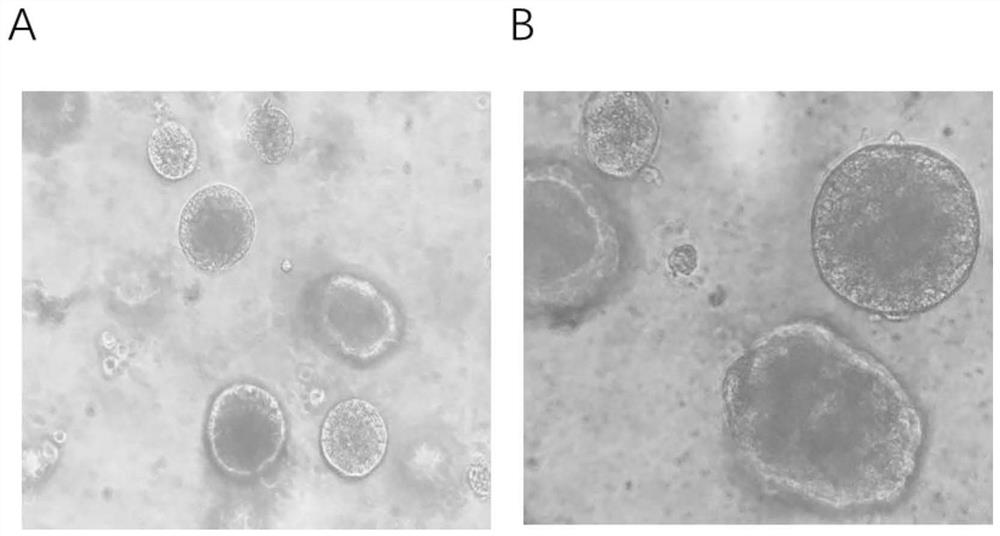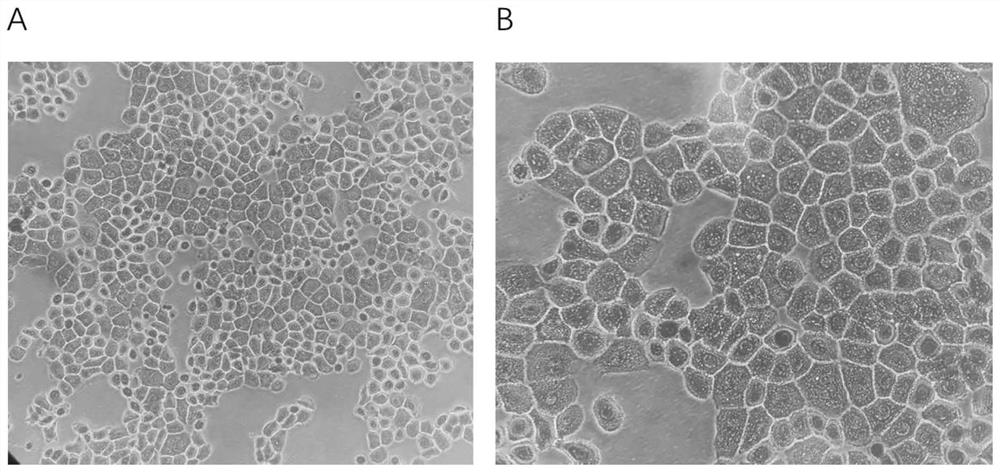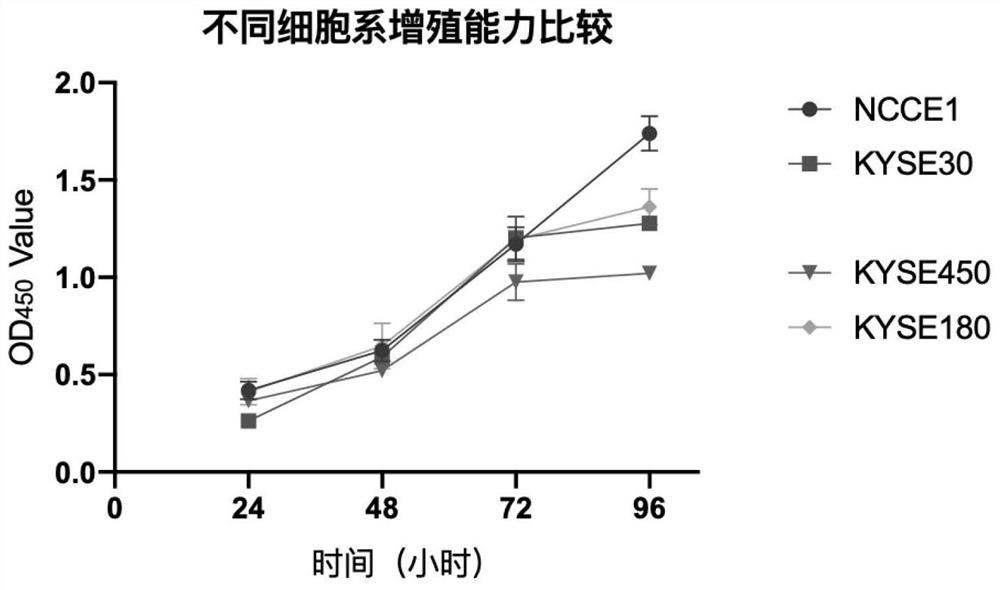Human esophageal squamous carcinoma cell line NCCE1 as well as establishment method and application thereof
A technology of esophageal squamous cell carcinoma and cell lines, which is applied in the field of tumor biology, can solve the problems of cell line contamination, esophageal cancer research cannot be carried out in depth, and the number of cell lines is small, and achieve good uniformity, stable properties, and high tumor formation rate. Effect
- Summary
- Abstract
- Description
- Claims
- Application Information
AI Technical Summary
Benefits of technology
Problems solved by technology
Method used
Image
Examples
Embodiment 1
[0041] Example 1 Establishment of human esophageal squamous cell carcinoma cell lines
[0042] 1. Experimental materials
[0043] Severe immunodeficiency NPI mice were purchased from Edmobiology, 6-8 weeks old;
[0044] RPMI-1640 medium was purchased from CONRNING company;
[0045] Fetal bovine serum was purchased from Beijing Fine Industry and Trade Company;
[0046]Glutamax was purchased from Gibco, article number: 3505006;
[0047] Hepes was purchased from Gibco, article number: 1563008;
[0048] N-2 was purchased from Gibco, article number: 1750204;
[0049] B27 was purchased from Gibco, article number: 17504-044;
[0050] advanced DMEM / F12 was purchased from Gibco, catalog number: 1263401.
[0051] 2. Source of tumor tissue
[0052] The human esophageal squamous cell carcinoma tissue in this example is sampled from the tumor tissue of a patient with esophageal cancer after surgical resection.
[0053] The clinical information of patients with esophageal squamous c...
Embodiment 2
[0069] Example 2 Characterization of NCCE1 cell line
[0070] 1. 3D culture experiment
[0071] 1.1 steps
[0072] 1) Put the Matrigel matrix in a 4°C refrigerator and thaw the Matrigel overnight before use. Shake the gel matrix after thawing to ensure that the gel is evenly mixed;
[0073] 2) Add 200 μL of matrigel matrix (8 to 11 mg / mL) into a pre-cooled 24-well plate, spread evenly with a pipette tip, and then incubate at 37°C for 30 minutes. Allow Matrigel to solidify;
[0074] 3) Wash the cells once with PBS. Cells were trypsinized to prepare a single cell suspension and then pelleted by centrifugation at 125 g for 5 minutes. Operate at room temperature;
[0075] 4) Resuspend the cells with culture medium and adjust the final cell density to 3×10 4 cells / mL, add 250 μL of the prepared cell suspension into each well of a pre-coated 24-well plate, and then incubate at 37°C for 30 minutes;
[0076] 5) Cool the medium on ice and add Matrigel matrix to 10% of the final...
PUM
 Login to View More
Login to View More Abstract
Description
Claims
Application Information
 Login to View More
Login to View More - R&D
- Intellectual Property
- Life Sciences
- Materials
- Tech Scout
- Unparalleled Data Quality
- Higher Quality Content
- 60% Fewer Hallucinations
Browse by: Latest US Patents, China's latest patents, Technical Efficacy Thesaurus, Application Domain, Technology Topic, Popular Technical Reports.
© 2025 PatSnap. All rights reserved.Legal|Privacy policy|Modern Slavery Act Transparency Statement|Sitemap|About US| Contact US: help@patsnap.com



